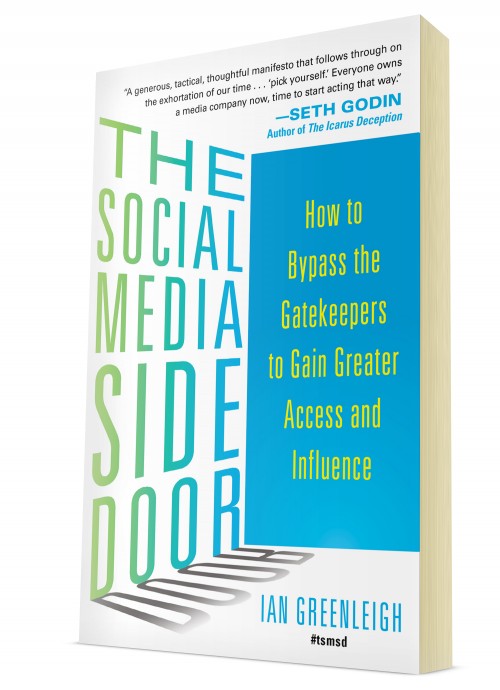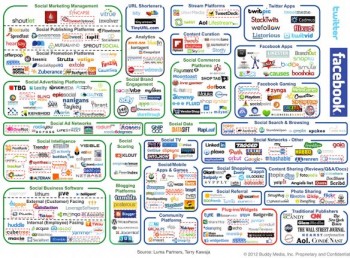By Jessica Davis
Influence is a highly valued social currency.
Today, the influence factor is synonymous with television ratings or viewership, perhaps slightly more powerful because of the added specificity or targeting potential. That holds true if you define influence as the ability to drive desirable change in a specific niche.
As a brand on social media, the power to influence an audience is invaluable (to follow, interact and purchase), but dealing with the tech-savvy and instant-gratification-seeking members of today’s market is a challenge. That is why I’ve explored and listed the top five ways to influence the modern social media user.
1. Play to your strengths with social content
According to this Google trend, the interest in thought leadership is growing. Whether you’re blogging to convert readers into buyers, or you’re blogging for brand recognition, it is vital to establish yourself as an expert or a thought leader. The simplest way to do that is begin with areas you’re comfortable with, or have expertise in. As Ronell Smith says, write the post that you’re passionate about. To cover the rest of your niche you could curate content from around the internet. Tools like FlipBoard, DrumUp or Curata help source. Your social page in totality should showcase all of the important information in your niche.
2. Change the focus of your social media conversations
To impact social users, brands must learn to use social media from the perspective of their audience. According to this study, 55% people said they use social to connect with friends and family (the top reason for using social media), while 45% said they use it to keep in touch with news and trends. “To be pitched to” doesn’t show up on the list. Instead of talking about your brand, you could give people news and information to stay up-to-date. That would be a more powerful way of reaching out to them rather than outright selling them something. Trend identification tools like Google trends and BuzzSumo are great sources of the news that you should research and write about.
3. Target your readers against targeting your buyers
Most brands target their buyers by focusing on set buyer personas. What they don’t account for is the people who don’t purchase from the brand but read and share their content. Instead of targeting your buyer personas, if you focused on reader personas, you benefit by increasing your reach and earning the opportunity to convert more people into buyers. Create content that attracts an audience wider than your target market. Doing that will help build a better perception of your influence.
For instance, home décor and interior design brand The Chromologist often talks about design in general and shares great photographs of art in nature, in cities and the world. Using that approach, the brand not only attracts people who want to redo their homes, but also people who are interested in design and appreciate beauty in general – an audience much larger than their intended target audience.
4. Acknowledge mentions and responses to drive more interaction
According to a study conducted by Search Engine Watch, 70% people who tweet brands expect a response, and 53% of them want one within the hour. The longer you take to respond, the more likely your audience is to switch to another social page, brand or product even if the tweet is a complaint or a trouble-shoot request. To stay truly real-time, you require notifications to warn you of social mentions. There are a host of listening tools like Mention and Brand24 that offer real-time desktop and mobile notifications for social mentions making them easy for you to track and respond to.
Whether the mention is positive or negative, it is a potential opportunity for PR and brand building.
5. Leverage the influence of your social media network
According to global market research firm Nielsen, 92% today’s social media users trust recommendations made by people like them over ‘brand content’. By connecting with people within your network and in your niche and enabling them to promote your content, you can impact your audience and even drive sales.
Brands as big as BMW have successfully done it, and so have medium sized set-ups like SpinGo. You simply need to find the right influencers to advocate your brand. One of social media’s biggest advantages is the fact that it puts power in the hands of ordinary people. Influencers needn’t be celebrities. They could simply be employees, partners, happy customers or well-wishers – anyone who is in contact with your market. These are sometimes referred to as micro-influencers. Here’s a look at one of SpinGo’s employee advocacy posts.
To organize and manage your advocacy efforts you could use an employee advocacy platform like LinkedIn Elevate, Kredible, Circulate.It or DrumUp Employee Advocacy Platform. Make sure that any employees who Tweet corporate information are clearly identified as employees in their profiles or bios, to be in compliance with FTC rules on influencer marketing.
Influence is simply about increasing your reach and impact on social media. With the right content, targeting and distribution channels you can drive maximum impact and conversions.
Author Bio: Jessica Davis is a Content Writer with Godot Media – a leading Content Management company. She has years of experience in working closely with online businesses, helping them refine their marketing strategy through optimum use of content. Her other interests, besides online content strategy, copywriting and search engine optimization, are technology, sports and even fashion.
Featured image via Flickr cc: Little Calpurnia!










